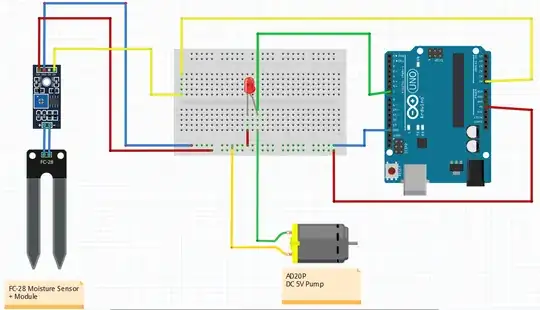I am trying to build an automatic watering system by following some examples. However, I don't have all the components for the entire system, therefore I have built it in Fritzing using only the components that I have (see scheme below):
I didn't build the physical version yet, because I am not sure that such a system would work without burning anything. In many examples, people connect the pump to a Relay Module, but since I don't have it yet, I would like to build it like this until I set up the watering system.
Can anyone help me understand why a relay would make it better or worse?
P.S. I have a JPC-3F relay, but I can see that the Relay Module contains multiple components. Is it possible to add the JPC relay to the pump without having the entire Relay Module? Would I need extra components for that?
Thank you!
EDIT: Thanks to the answer from ratchet freak, I have added resistances and a transistor. It works fine, but the same question stands. Do I still need a relay in this case?

